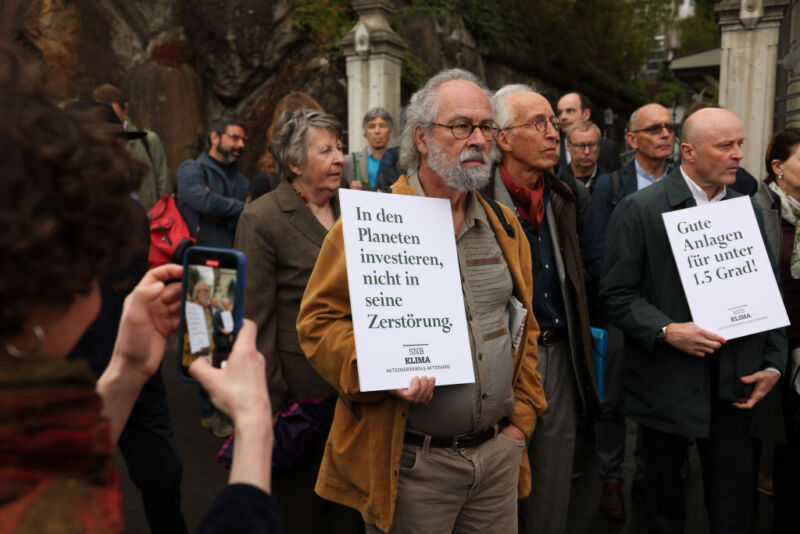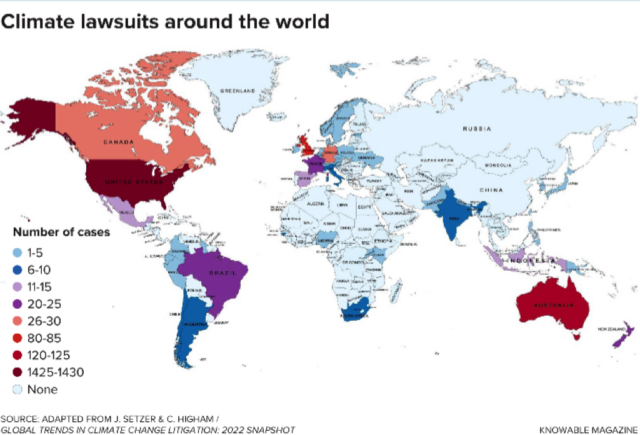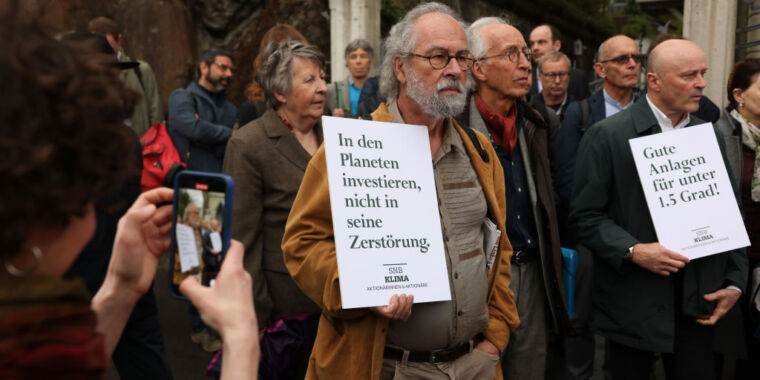
Even the temperate, mountainous country of Switzerland is not immune to climate change. Sweltering heat waves melt alpine glaciers, kill trees and fish, and are likely to cause an increase in human deaths in cities.
Rosmarie Wydler-Wälti, who lives in Basel, is well aware of this. A woman in her 70s, she is among the population most vulnerable to heat-related deaths. To her, the government’s response to the recent heat waves – warning seniors to stay in the shade during hot days – seemed like a Band-Aid. She wanted to see people address the root of the problem: Countries like Switzerland are not doing enough to curb greenhouse gas emissions that are warming the planet.
With support from Greenpeace Switzerland, Wydler-Wälti and other members of a group of senior female climate activists filed a lawsuit against the Swiss government in 2016, demanding that the state accelerate emissions reductions. They argued that by not adhering to policies consistent with the global goal of limiting warming to less than 2 degrees Celsius above pre-industrial temperatures, the government was threatening older women’s basic human right to life. Indeed, many of the women involved eventually reported experiencing palpitations, vomiting, swollen arms and legs and shortness of breath during recent heat waves, and some reported fainting.
Hundreds of lawsuits like this have been filed around the world in recent years, as activists, frustrated by the slow pace at which countries act to reduce greenhouse gas emissions, turned to the courts for help. The success rate has surprised many experts. Of those cases filed outside the United States — the focus of one analysis — dozens had outcomes encouraging more aggressive climate action, according to a 2022 report from the Grantham Research Institute on Climate Change and the Environment at the London School of Economics and Political Science . For example, in a groundbreaking case closed in 2019, Dutch courts ordered the government to set more ambitious climate targets.
But such cases do not always succeed. To Wydler-Wälti’s disappointment, after a series of courts dismissed the case, the Swiss Supreme Court concluded in 2020 that women’s rights had not been violated sufficiently seriously to warrant a case. “We would have to be half dead to believe that we are particularly affected,” says Wydler-Wälti angrily.

Exploring why some cases succeed and others fail is key to understanding the future of this fast-growing area of law. Experts say success depends on many factors – not just the plaintiffs’ arguments, but also the design of a country’s legal system, its political environment, and the apparent willingness and/or ability of judges to examine the scientific evidence surrounding climate change. to interpret.
“One of the reasons it is so important to look closely at these cases and the impact they have is because their impact is likely to grow in the coming years as people increasingly see litigation as an important way to problems of climate change,” said Hari Osofsky, a human rights expert now at Northwestern University’s Pritzker School of Law who co-authored a 2020 survey of climate change disputes in the Annual Review of Law and Social Science.
That said, “lawsuits alone will not close the emissions gap,” adds Osofsky. “Climate change solutions require many different types of action.”

